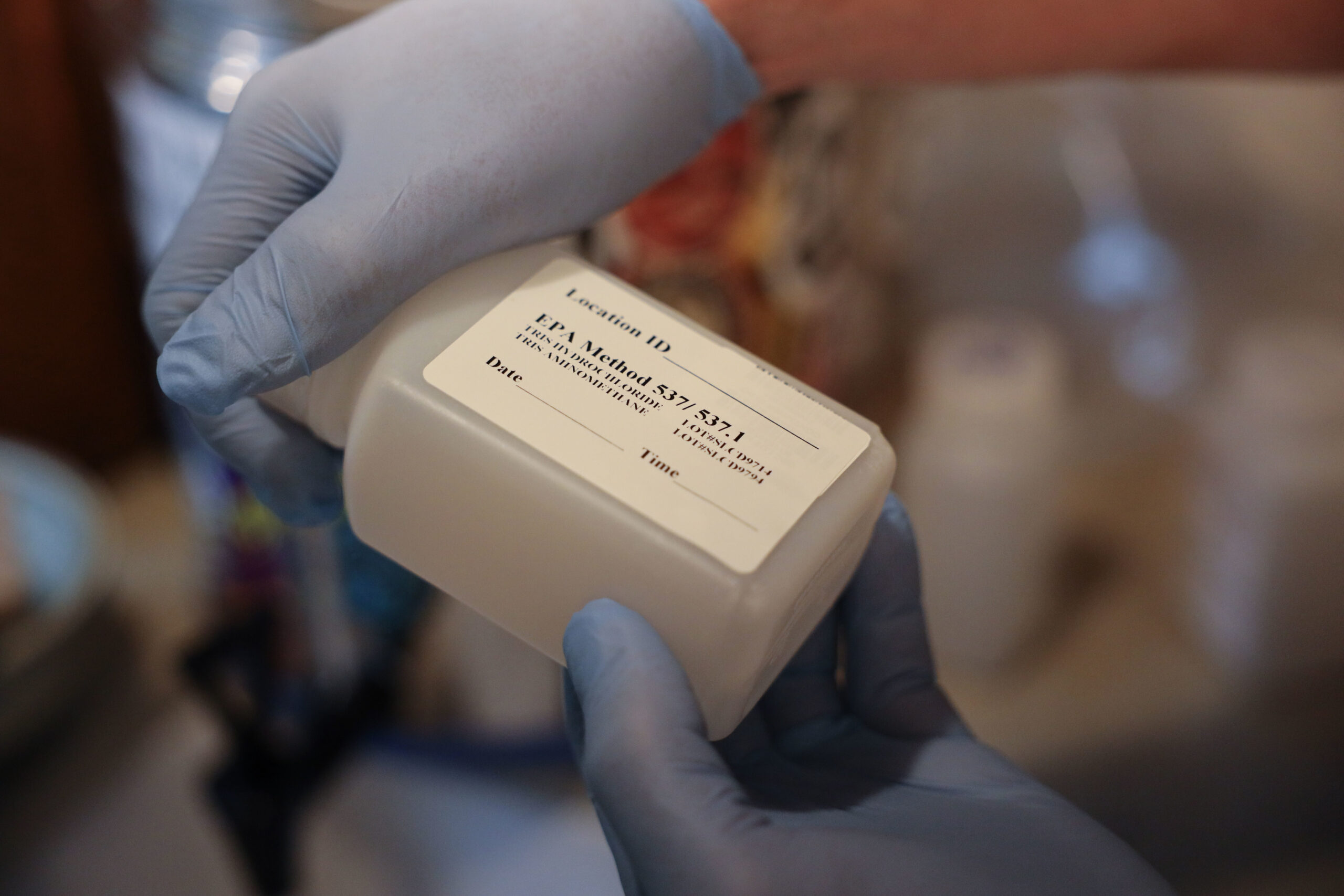Nearly two-thirds of Wisconsin fire departments currently stock firefighting foam that contains so-called forever chemicals known as PFAS. More than half have bought, stored or used such foam in the past, according to a survey conducted by the Wisconsin Department of Natural Resources.
Perfluoroalkyl and polyfluoroalkyl substances — known as PFAS — are manmade chemicals that have been common in firefighting foam and everyday products since the 1950s. They’ve raised safety and environmental concerns because they don’t break down easily in the environment and they’ve been linked to an increased risk of some cancers.
The survey was requested as part of Gov. Tony Evers’ budget and sought to define use of foam containing the chemicals, which is considered a significant source of PFAS contamination. Wisconsin joins other states like Michigan, Minnesota and Vermont as they work with departments to address environmental risks.
Stay informed on the latest news
Sign up for WPR’s email newsletter.
The DNR received responses from 72 percent of the state’s 825 fire departments, of which 77 percent replied that they had handled PFAS-containing foam. The data indicates 64 percent of all departments currently have such foam in stock.
The findings were a bit surprising to Darsi Foss, administrator of the agency’s environmental management division.
“I would have thought it would have been probably a little smaller because usually this is for like major industrial fires,” said Foss, of the foam.
The agency estimates anywhere between 63,200 to 96,300 gallons of the foam is being stored across the state. The DNR said another 30,000 gallons of expired or unwanted foam needs to be disposed.
The majority of those that responded — 63 percent — used the foam as part of emergency response to flammable liquids or gas, according to the DNR. Of those that handled the foam, 62 percent lacked policies or guidelines for its use. Less than 24 percent of departments surveyed used the foam for training and 23 percent said they never handled the foam.
A law that took effect this month bans the use of firefighting foam containing PFAS except in emergencies. The law allows testing, storage and disposal under specific conditions. But fire departments and other facilities using the foam must find alternatives to use for training.
The survey findings demonstrate the need for resources to collect and dispose of PFAS-containing foam, according to Chris Garrison, president of the Wisconsin State Fire Chiefs Association.
“We have it at our fire station. We have it on our trucks, and now we’re we told can’t use it, which we completely understand,” said Garrison. “We bought into it, but the thing is how do we get rid of it? It’s a very expensive process to get rid of it.”
Garrison, who is also chief of the Sun Prairie Fire Department, said his department has seven rigs that have PFAS-based foam in them. He’s received estimates that it would cost $3,000 per vehicle to properly dispose of it.
“That’s a big hit for me being a medium-size combination fire department, but think about the smaller fire departments that have a dozen members,” said Garrison. “That might cover their whole budget.”
He said most departments are storing foam until they receive financial assistance to dispose of it.
The Wisconsin PFAS Action Council, which consists of multiple state agencies, has been developing a plan to address PFAS as part of an executive order issued by Evers last year. Foss said a foam collection effort and funding are being considered as part of efforts to help reduce the risk of contamination statewide.
Last month, the Natural Resources Board tabled an emergency rule that would’ve outlined regulations for treatment and disposal under the law, which means departments lack a clear definition on appropriate measures to follow.
“They’re going to have to kind of look at best management practices of industry and work with their environmental consultants to make sure this is being done correctly,” said Foss. “They can look at our versions of our draft rules to kind of understand where we’re going with this.”
The board delayed action after business groups expressed concerns about limits the agency proposed for treatment. The board is expected to address the rule again in October.
The DNR estimates there are as many as 200 public and private systems that use PFAS-containing foam for fire suppression, costing them an average of $2.3 million each year to comply with the law’s disposal requirements. The agency expects those costs will be less than the amount to clean up contamination and decline over time as replacement foams are used.
There are around 30 sites across Wisconsin that the DNR is investigating for PFAS contamination, according to data from the agency’s website. Foss said a large share, but not all, of the investigations are linked to the use of firefighting foam.
Wisconsin Public Radio, © Copyright 2025, Board of Regents of the University of Wisconsin System and Wisconsin Educational Communications Board.




